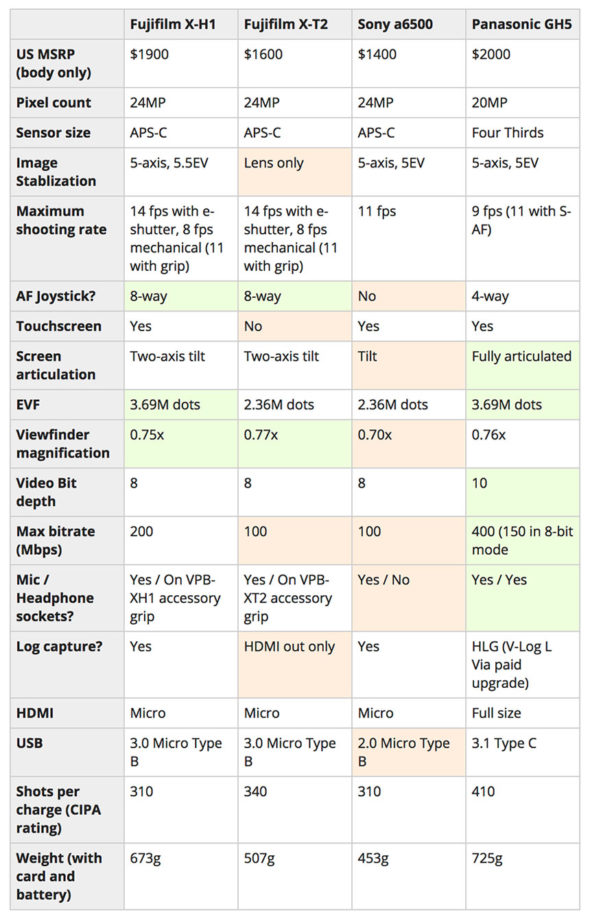Video
OK Fuji, now you have my attention.
I have used Fuji cameras in the past (and love them), but only for stills. Today Fuji announced a very interesting camera for video and hybrid shooters. The new X-H1 shares the same 24-megapixel APS-C X-Trans III sensor from the popular X-T2, but adds a number of important improvements like five-axis in-body image stabilization and log capture.
The X-H1 records both DCI (23.98 and 24p) and UHD 4K (up to 30p) with Rec.2020 at 200Mbps, but only at 8 bits.
A cool feature is that Fuji has included specific shutter speed options for video on the X-H1. For example, instead of 1/25 or 1/50 of a second, users can select 1/24 sec or 1/48 sec.
Slow-mo fans have to stick to 1080p, but can enjoy up to 120fps.
Key Specifications
• 24MP X-Trans APS-C sensor
• DCI and UHD 4K capture at up to 200 Mbps
• Slow motion 1080 (from 120 and 100 fps)
• 5-axis in-body image stabilization (rated at 5EV)*
• 3.69M-dot OLED viewfinder
• Touch sensitive rear LCD with two-axis tilt
• Twin UHS-II-compatible card slots
• Anti-flicker shooting mode
• Internal F-Log capture
• 24-bit audio capture
• Eterna/Cinema Film Simulation mode
• Timecode
• No-blackout continuous shooting
• Wi-Fi with Bluetooth for constant connection
Here are the complete specs on Fuji’s website.
First Impressions
I was told that the X-H1 is limited to 15 minutes of 4K shooting, but I haven’t test this yet. Even if this is accurate, I don’t believe it is a big issue for most people, unless you plan to shoot interviews or live events.
It is not clear if autofocus work in movie mode, and if it does, how fast and accurate it is. We’ll see.
I’m also curious to see if the new internal microphone is better than previous models. Apparently there’s no headphone jack on the body itself, so you will need the additional battery grip to monitor audio. Again, this isn’t a huge deal as the additional battery power is always welcomed when shooting video, but it’ll cost you an extra $300 USD.
Fuji also announced two new cinema lenses, the Fujinon MKX 18-55mm f/2.9 ($4,000 USD) and the Fujinon MKX 50-135mm f/2.9 ($4,300 USD).
The X-H1 (body only) costs $1,900 USD (less than the Panasonic GH4, Panasonic GH5s and Sony A7S II), and $2,200 USD as a kit with the battery grip.
I’d like to see real life examples of Fuji’s “Eterna/Cinema” Film simulation and F-Log footage. If you find a good one, please share the link.
All the items announced today should start shipping in two weeks.
If you are a stills shooter getting into video, considered watching some of our many free online tutorials.


